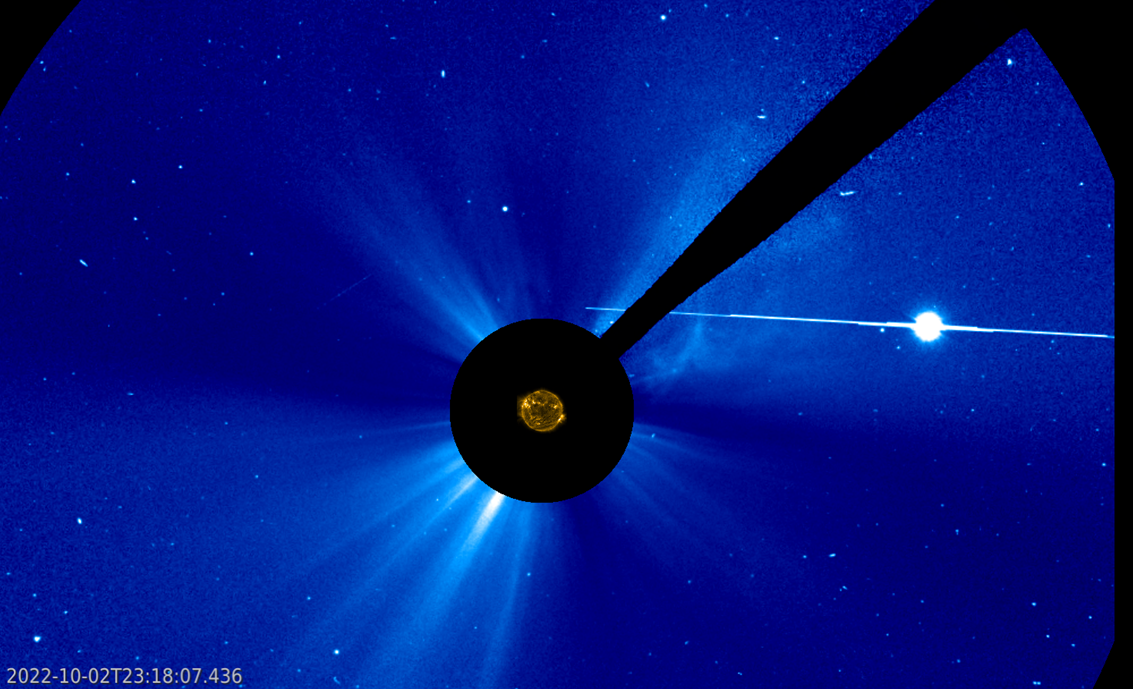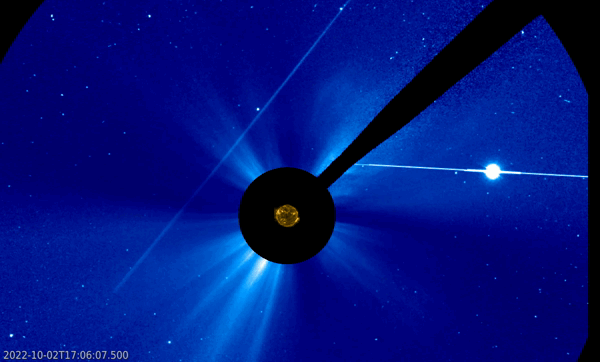The Sun did not take a weekend break, as it produced an M5.8 flare on 1 October peaking at 20:10UTC, an M8.7 on 2 October at 02:21UTC, and a X1 flare at 20:25UTC. And this was on top of a number of low-level M-class flares starting already on 30 September. The strongest flares are highlighted in the soft x-ray plot by GOES underneath, covering 1-3 October.
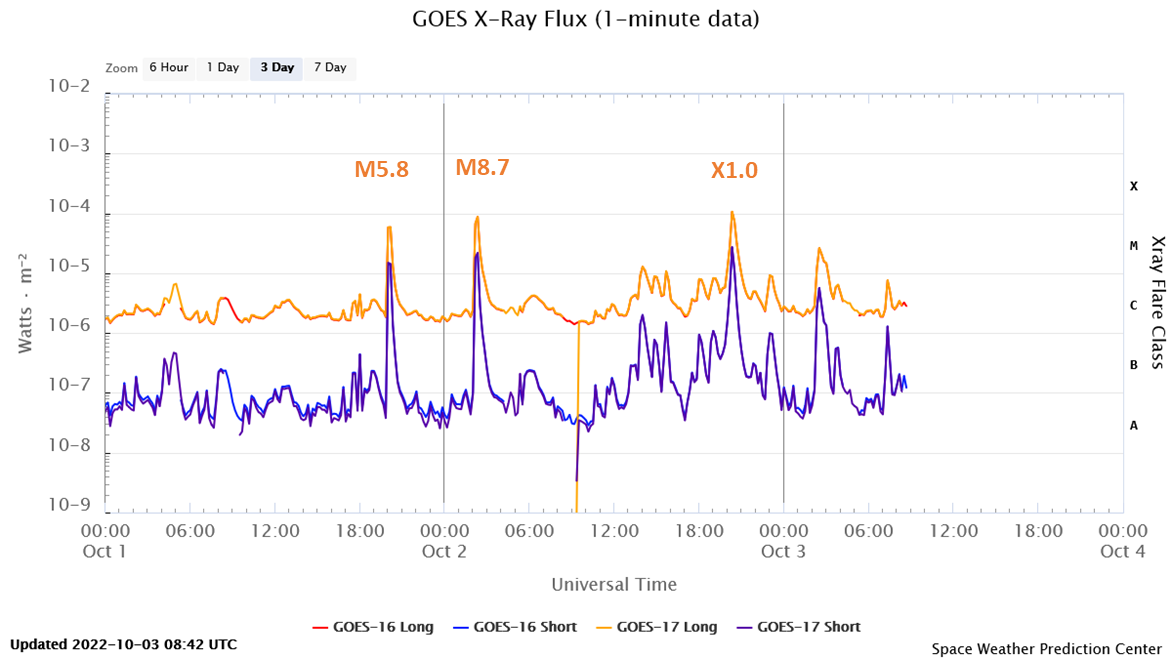
One would expect that these flares were produced by the large and complex sunspot region NOAA 3112. This region had started to rotate over the northeast limb on 30 September, and had a sunspot area equivalent to about 4 times the surface area of the Earth by the end of 2 October. The region also contained several delta spots, indicated by the red circles in the imagery underneath. A sunspot group is said to have a delta structure when it contains at least one mature spot in which umbrae of opposite magnetic polarities are separated by less than 2 degrees and situated within the common penumbra. This is shown in the comparison images underneath, with a white light image on the left and a magnetogram on the right as taken by the SDO/HMI instrument. White indicates magnetic field lines leaving the Sun ("positive polarity"), black indicates magnetic field lines returning to the Sun ("negative polarity"). Delta spots are known for their flare productive character.
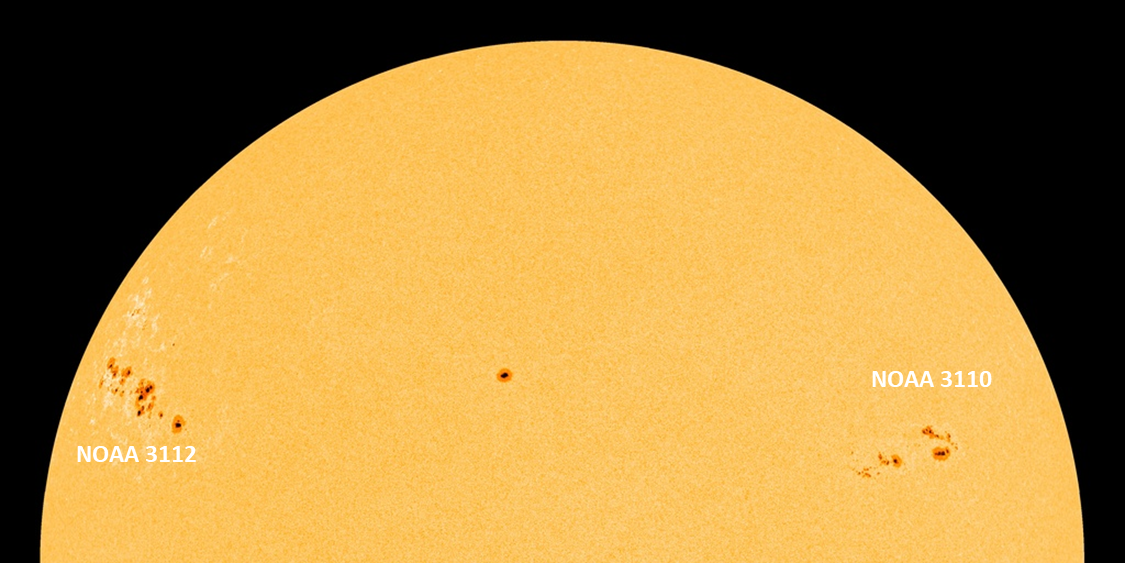
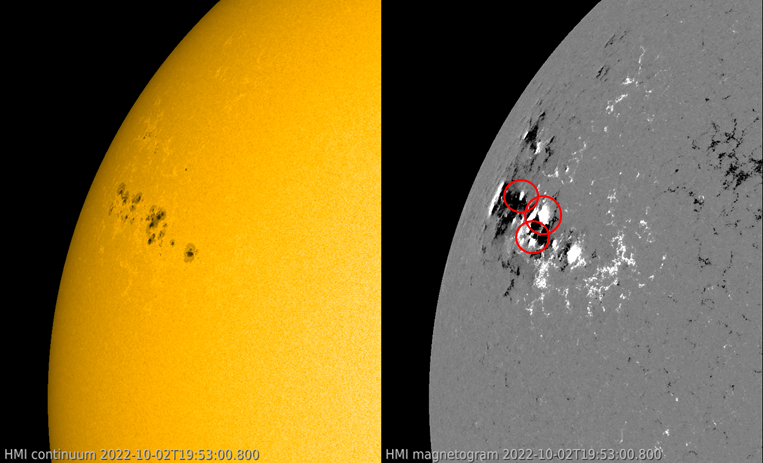

Interestingly, the flaring production of NOAA 3112 has remained limited (so far) to low-level M-class flaring (M1, M2). The strong flares mentioned earlier all came from NOAA 3110, which was a stable symmetrical sunspot until 1 October, when it started to develop some small spots to its west and north. As indicated by the red circle in the image above, these contained a delta structure setting off the observed strong flaring on 1 and 2 October. The imagery below shows the X1 flare from NOAA 3110 in white light and in extreme ultraviolet. The blooming and diffraction patterns are image artefacts, not related to the flare - See this STCE newsitem at for more info.
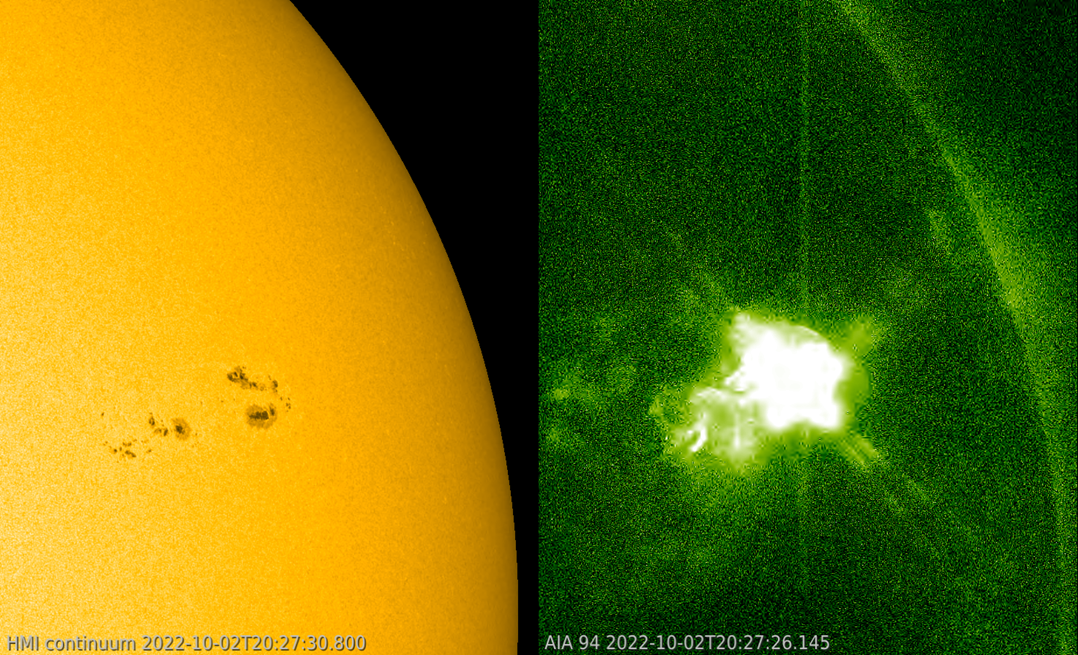
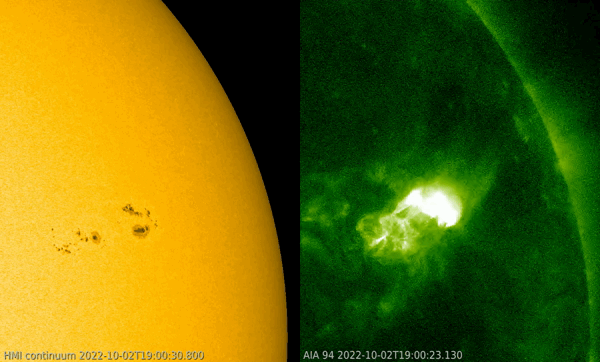
The X1 flare was the strongest event so far, being accompanied by some strong radio emission affecting GNSS frequencies as well as the observed 10.7cm radio flux, which is daily measured by Penticton, Canada between 19:30 and 20:30UTC. It also slightly enhanced the greater than 10 MeV proton flux, which remained well below the alert threshold. Most of the coronal mass ejections (CMEs) related to the solar eruptions from the last few days apparently were not squarely directed at Earth. Nonetheless, they can still deliver a glancing blow during the coming days (most likely on 4 October), thus increasing the chance on a reasonably strong geomagnetic storm.
Underneath a coronagraphic image with an EUV image of the Sun (SDO/AIA) overlaid, showing the CME associated with the X1 flare being mostly directed to the northwest (upper right of the image). The bright spot is the planet Venus, currently located at the opposite side of the Sun as seen from Earth. Both NOAA 3110 and 3112 may continue to produce strong flares in the coming days, but associated CMEs from NOAA 3110 will become less likely to have an earth-directed component, as the region is rotating towards the Sun's west limb. For NOAA 3112, it's just the reverse, as the region is moving towards the disk centre.
